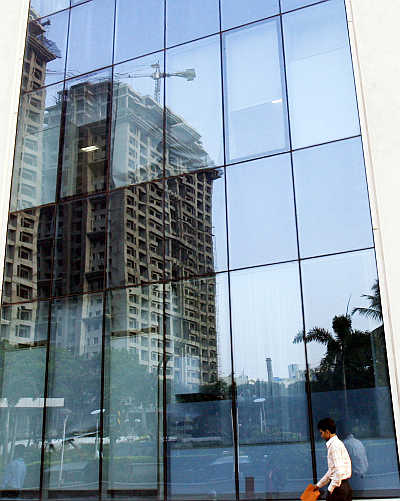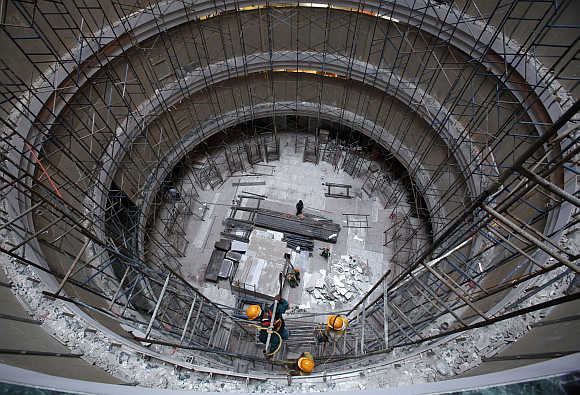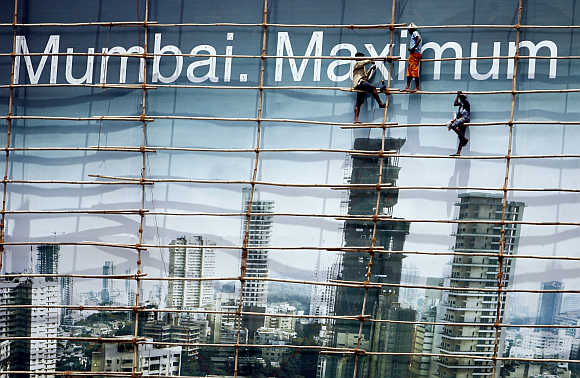 | « Back to article | Print this article |
Mumbai: City of height needs to grow more vertical
Mumbai's real estate is among the most expensive in the world. Partly, of course, this is a result of geographical factors - the city is limited by natural boundaries of sea, hills and marshland.
Partly it is due to subversion of the real estate market by well-connected builders. But, above all, it is a function of artificially constrained supply. Mumbai has always been the most vertical of India's cities; and it should perhaps be more vertical still, in order to help ease its yawning deficit in floor space.
Mumbai today has fewer square metres of floor space available per resident than almost all other major world cities.
Click NEXT to read more...
Mumbai: City of height needs to grow more vertical
A more vertical city would not only ease that constraint, but also make commuting in Mumbai less of a nightmare; today, because of the lack of availability of housing units close to their workplaces, Mumbai's residents have among the longest average travel times in the world.
It, therefore, could be argued that the ministry of environment and forests should look favourably upon the Maharashtra government's demand that it ease certain restrictions on vertical building that it has imposed.
In particular, the MoEF requires the height of a building to be linked to the width of a road - for example, a 60-metre high building must be on a 30-metre wide road.
Click NEXT to read more...
Mumbai: City of height needs to grow more vertical
The MoEF's logic is that this is necessary to reduce congestion. However, the consequences of such rigid rule-making are severe.
While such an approach does little to address problems like congestion through better traffic planning and management, it also reduces the ability of a city to meet its inhabitants' demands for more space - and actually stresses infrastructure further as people commute longer and longer distances.
In any case, the question must be asked: why, precisely, is the MoEF creating rules for what surely should be a decision taken at a more local level?
Click NEXT to read more...
Mumbai: City of height needs to grow more vertical
The ministry is insufficiently accountable to the people of Mumbai for this restriction to come from it. In addition, it is far from clear why a city-planning decision should be made by a ministry that's supposed to look at environmental considerations.
As it is, the ministry's reputation for delays in clearances is not enviable - not entirely its fault, given the number of such clearances required and the pace at which they are being applied for.
Nevertheless, the MoEF has sought to increase its domain and Maharashtra Chief Minister Prithviraj Chavan is right to point out that Mumbai's development and its people's aspirations for more space cannot be held hostage to a single ministry's concerns.
Click NEXT to read more...
Mumbai: City of height needs to grow more vertical
In general, decisions on how vertical or not a city should be are better left to local authorities, which should be made more accountable to the people of the city they supervise.
Some cities, like Delhi, may manage to expand more horizontally. Others, like Mumbai, may need to go vertical.
There is no one-size-fits-all method. The Centre could frame model guidelines on such matters, but should ideally allow the local authorities to take a more considered view depending on specific conditions on the ground.





